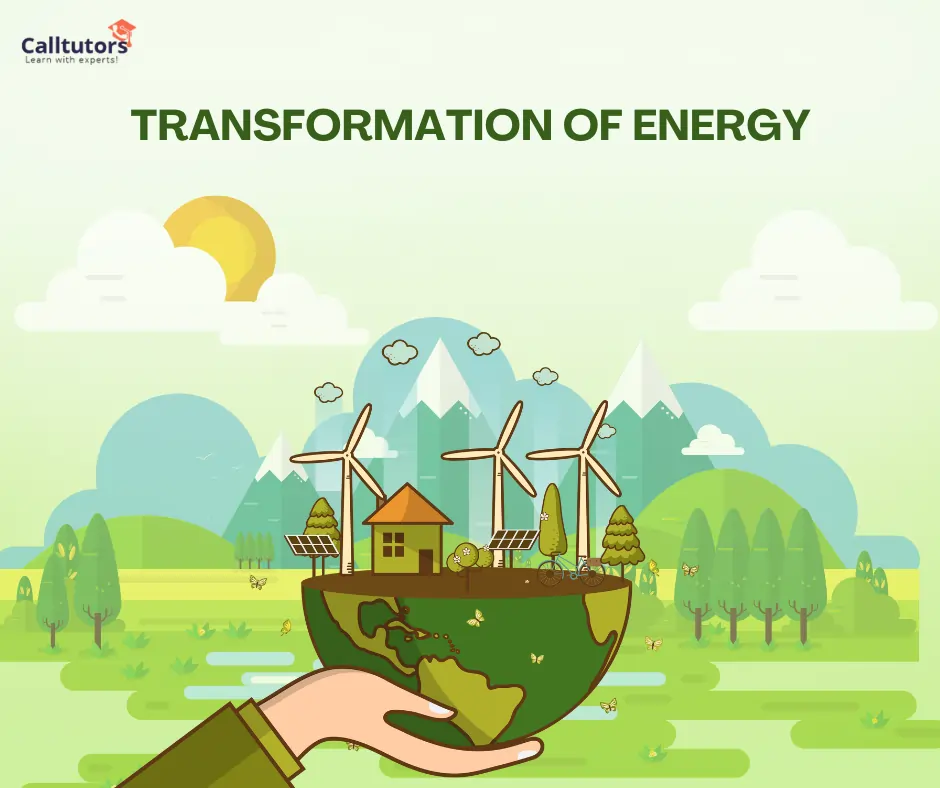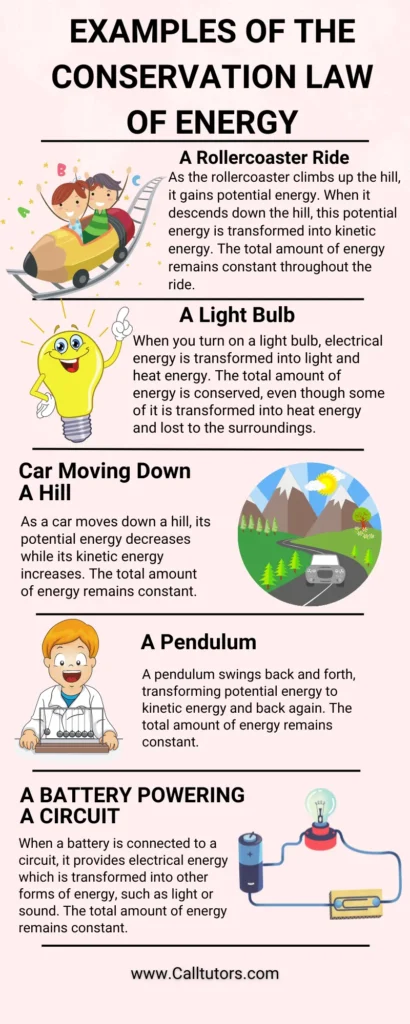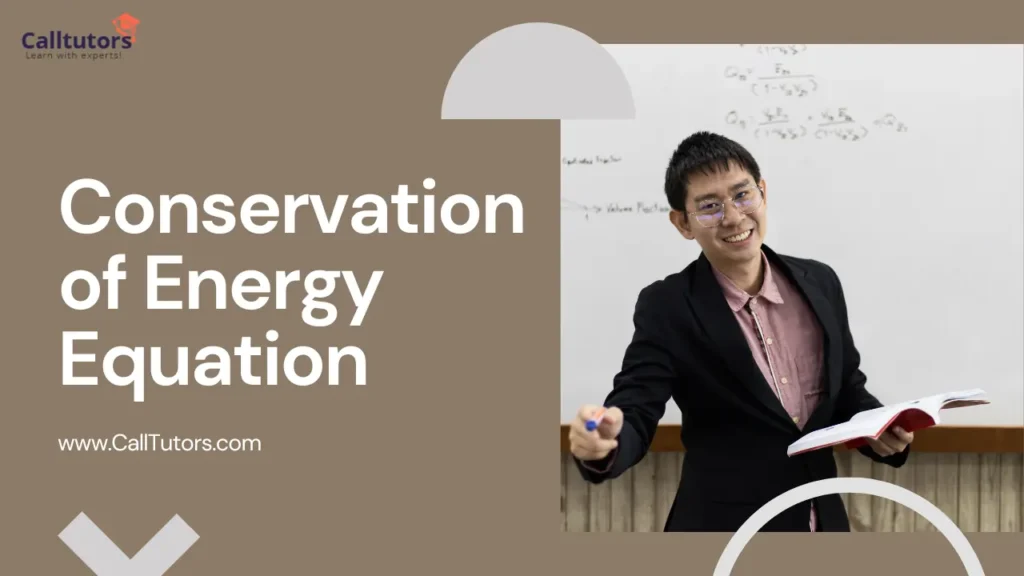The conservation of energy equation, mass storage, and momentum conservation are fundamental concepts in physics. Within some problem fields, the amount of energy remains constant. And power is not produced or lost. Energy can transform from one form to another. But the overall energy within the domain remains constant.
Conservation of interaction of energy and mass are known as two separate laws in physics. However, as per the famous equation E = mc2, in general relativity. The matters can be converted through energy or vice versa. It is, therefore, more proper to say the mass-energy is preserved.

What Is the Conservation of Energy Equation?
Table of Contents
The conservation of energy equation, also known as the first law of thermodynamics, is a fundamental principle in physics that states that energy cannot be created or destroyed. Still, it can be transformed from one form to another.
In mathematical terms, the conservation of energy equation can be expressed as:
ΔE = Q – W
Where ΔE is the change in the internal energy of a system, Q is the heat added to the system, and W is the work done by the system.
This equation states that the change in the internal energy of a system is equal to the heat added to the system minus the work done by the system. In other words, the energy that enters a system must either be used to do work or increase the system’s internal energy.
The conservation of energy equation has important applications in a wide range of fields, including thermodynamics, mechanics, and electromagnetism. It is used to analyze the behavior of energy in various systems, from the motion of particles to the operation of power plants.
conservation of energy equation
The quantity of energy in a system, formerly, is resolute by following the conservation of energy equation:
“UT=Ui+W+Q”
- UT refers to the total of internal energy in a system,
- Ui refers to initial internal energy in order,
- W refers to the work completed on or by the system,
- Q refers to the heat extra to or detached from, a system.
The increase in the internal energy of the device can be calculated by means of the calculation.
ΔU=W+Q
Transformation of Energy

The transfer of energy from one process to another takes place all the time. The chemical energy of food is converted into thermal energy through digestion. And light energy becomes transformed into chemical energy through photosynthesis.
The thermal energy throughout the steam is transformed into electrical energy. As it turns a turbine attached to an engine to create electrical power. The chemical energy to coal is converted into the thermal energy in a broader context. As it burns in such a furnace to convert back into the water.
Energy conservation law
The conservation of energy equation law states that God does not exist. Or destroyed-it can only be converted from one source of energy to another. It implies that unless it is applying from outside. A machine has always had the same amounts of energy.
In non-conservative force, which converts energy from electrical energy into the thermal energy, it’s especially confusing, but the aggregate energy remains the same. Transforming energy from one shape to another is the only way of using electricity.
proof of the thermodynamics law
While the high conservation of energy equation is compelling, they could make it difficult for reviewing the statement power. The prepared message refers that it is impossible to create electricity from anything. Society needs to get electricity from somewhere, though there are plenty of sly ways to get it.
Conservation of Energy Equation in Nuclear Reactions
We have to apply the general law of the conservation of energy equation in the analysis of nuclear reactions. Mass and energy are equal and interchangeable into each other according to this rule. It is one of Einstein’s theories of relativity’s surprising findings. This mass and energy equivalence is described by the famous conservation of energy equation offered by Einstein, E = mc2.
Generally, in nuclear as well as chemical reactions, there is an absolute difference between rest energy and mass. So that the components are usually smaller or larger than that of the reactants. In general, it is essential to preserve the total amount of energy. Therefore, since the kinetic energy produced throughout the reaction, the “missing” rest mass should reappear. The difference is indeed a measure of both the binding nuclear energy that holds together and the nucleus.
Conservation of Energy Equation Formula
The conservation of energy equation is also known as the first law of thermodynamics. It can be written in several forms, but the most common one is:
ΔU = Q – W
Where ΔU is the change in internal energy of a system, Q is the heat added to the system, and W is the work done by the system. This equation states that the change in internal energy of a system is equal to the heat added to the system minus the work done by the system.
Alternatively, the conservation of energy equation can be expressed in terms of enthalpy:
ΔH = Qp – W
Where ΔH is the change in enthalpy, Qp is the heat added at constant pressure, and W is the work done by the system.
These equations are fundamental in studying thermodynamics and are used to analyze energy transfers and transformations in various systems.
Consequences of Conservation of Energy
An exciting result of the conservation of energy equation law is that it implies that first-class perpetual motion devices are not feasible. In other terms, to continually provide unlimited energy to its environment. A device must have an external power source. It should also be remembered that the conservation of energy equation cannot always be established. Because not all programs have resources translation symmetry.
The best way to conserve would be to reduce demand on a limited amount of supply and encourage the market to start rebuilding itself. Most occasions, swapping the electricity used with an option is the easiest way of doing this. If the conservation of energy equation is completed. We may establish calculations that suit the amount of the various energy sources in a structure.
We can then be able to solve that the velocity, size, or some other type of parameter that depends upon the capacity. If we don’t know enough of the variables to find a suitable solution. Plot-related variables might still be useful to see if a solution is found.
Examples of the Conservation Law of Energy
The Conservation Law of Energy states that energy cannot be created or destroyed, only transformed from one form to another. Here are some examples of this law:

How Does the Conservation of Energy Equation work?
The conservation of energy equation is a fundamental principle in physics that states that the total amount of energy in a closed system remains constant over time. In other words, energy cannot be created or destroyed, only transferred from one form to another.
The conservation of energy equation can be expressed mathematically as:
ΔE = E_final – E_initial = 0
Where ΔE is the change in energy, E_final is the final energy of the system, and E_initial is the initial energy of the system.
This equation tells us that the total energy in a system must be conserved. If there is a change in energy in one part of the system, there must be an equal and opposite change in energy in another part of the system.
For example, if a ball is dropped from a height, it gains kinetic energy as it falls. At the same time, it loses potential energy due to the decrease in height. The sum of these two energies remains constant, and the system’s total energy is conserved.
The conservation of energy equation is a powerful tool that can be applied to a wide range of physical systems, from simple mechanics to complex thermodynamics. By understanding and applying this principle, scientists and engineers can design more efficient systems and optimize energy use.
Conclusion (conservation of energy equation)
Consequently, the conservation of energy equation is a fundamental principle in physics that states that energy cannot be created or destroyed but can be transformed from one form to another. The equation is expressed as ΔE = Q – W, where ΔE is the change in the internal energy of a system, Q is the heat added to the system, and W is the work done by the system. This equation is used to analyze energy behavior in various systems and has important applications in many fields, including thermodynamics, mechanics, and electromagnetism. The conservation of energy understanding is crucial to know the behavior of natural systems and to develop efficient and sustainable energy technologies.
FAQs
What Is The Principle Of The Conservation of Energy Equation?
The principle of energy conservation states that energy is neither created nor destroyed. It may transform from one type to another.
Who gave the law of conservation of energy?
In 1842, Julius Robert Mayer discovered the Law of Conservation of Energy.
What is the first energy in the world?
The first energy in electric generation is primarily from coal and nuclear power plants, but it also includes oil, natural gas, and hydroelectric power plants.



